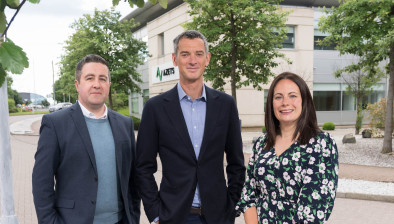Scottish SME R&D tax claims fall but value rises

Gemma Monaghan
The number of Scottish SMEs claiming R&D tax credits has dropped by 16% in 2022/2023 compared to the previous period, despite a 10% rise in the value of claims, reflecting that, whilst there are fewer claims, the size of each claim has increased.
Gemma Monaghan, head of R&D tax with Azets, suggests that HMRC’s high profile campaign on fraud – which has included raids on businesses – plus more stringent submission processes could be dissuading companies from making applications.
She said: “Scotland has a long tradition of ground-breaking innovation, and it is important that these changes are not prohibitive for entrepreneurial SMEs.
“Fraud and inauthentic claimants and advisors must be deterred, but the approaches taken will have inevitably caught genuine claimants through the flawed enquiry process or by discouraging others from claiming.
“Businesses should be encouraged to invest in R&D and be aware that seeking professional advice to navigate the changing rules and complex R&D landscape is more important than ever. It is encouraging, however, that whilst the number of claims fell, the value of claims rose by 10%, which would be a positive development if sustained over the long term.”
The sectors in Scotland showing the largest claims fall include retail & wholesale trade and repairs where total claims plunged from 270 to 115 and the value collapsed from £50 million to below £10m. However, companies within the professional, scientific & technical sector saw the number of claims increase from 400 to 560 with a rise in value from £50m to £110m.
The estimated total R&D tax relief claimed in Scotland was £360m, corresponding to £2.2 billion of R&D expenditure. Scotland’s share of R&D tax relief compared to the rest of the UK is only 4.8% and Scotland is the 4th smallest region in terms of value claimed.
Across the UK, HMRC’s data reveals that the total number of claims were 65,690, a 21% decline compared to 2021-2022. The estimated amount of total R&D tax relief support claimed was £7.5bn, 1% higher than the previous year, which corresponds to £46.7bn of R&D expenditure. Fraud and error however remain a major problem, accounting for more than £4.1bn between 2020 and 2024.
Discussing the background to the decline in claims, Ms Monaghan explained: “The large fall stems in part from the implementation of the additional information form (AIF) for claims made after August 8, 2023.
“Allowable only in a digital format, this requires a detailed breakdown of costs across qualifying categories, listing projects and providing a description of the R&D included the expected advances in scientific or technical knowledge the R&D is hoping to achieve.
“Each claim also needs to be endorsed by a named senior officer of the business, and any agent who has advised on compiling the claim must also be named.”
She continued: “Businesses which have not made a claim in the previous three years must also inform HMRC of the intention to make a claim within six months of the end of their accounting periods.
“We also recommend that a supplementary report is still provided, giving HMRC information not required in the AIF, but that we know they want to see presented.
“Whilst the changes will have had little impact on businesses which are already complying with the additional information guidelines, they will have affected companies that may have previously attempted to circumvent the regulations.
“We welcome changes that will deter fraudulent claims and ensure that malpractice is minimised by improving compliance in a poorly regulated market. Importantly, they will also deter unlicensed agents from submitting unsubstantiated claims of behalf on unwary clients.”
Latest available figures from the ONS (Office for National Statistics) show that The UK government’s net expenditure on R&D rose to £15.5bn in 2022, from £14bn in 2021, an increase of 10.5%.
The HMRC statistics are based on R&D relief rates prior to the reform of the system to bring the two schemes closer together and do not fully reflect its impact. For accounting periods beginning on or after 1 April 2024, a new, single expenditure credit scheme was launched for companies of all sizes.
Two R&D reliefs are now available – the merged SME and RDEC schemes alongside the new Enhanced R&D Intensive Support (ERIS) designed for R&D intensive, loss-making SMEs.
The government says increasing the amount of R&D carried out by companies is a key part of its aim to increase productivity and promote growth. R&D tax credits support business investment by allowing companies to claim an enhanced corporation tax deduction or payable credit on their R&D costs.
Azets has written to Chancellor Rachel Reeves ahead of the 30 October Budget, presenting key proposals to simplify and strengthen the current R&D tax relief scheme. The letter calls for a more business-friendly framework that offers clearer, more accessible support to foster innovation and drive growth across the UK. It also proposes simpler rules, more certainty for businesses, equal treatment across industries, relief for significant inventions, unified rules for innovation-related reliefs, effective fraud prevention, simplified patent taxation, clearer approval processes, specialist expertise in assessing claims and additional funding avenues.
Ms Monaghan concluded: “There are growing challenges around complexity, uncertainty, and clawbacks that highlight the need for reform within the current system – reforms which could help ensure that R&D tax relief continues to support innovation effectively.
“By simplifying the system and providing clearer guidance, businesses would be better able to navigate the process and access the support they need to innovate and grow, thus ensuring that research and development continues to play a vital role in driving the UK and Scotland’s future economic growth and ambitions to remain global leaders in innovation.”








